As mentioned in the last post, the Great Streets Rengstorff Park project is was highlighted in the Mountain View Voice, with a focus on the safety improvements that are urgently needed for California Street following the tragic case of reckless driving that killed William Ware.
Judging from the comments, there was a lot of interest in the idea, but there were questions about California Street’s ability to function with two car lanes and one turn lane, instead of four car lanes. I thought it would be appropriate to go into a bit more detail about how the road diet can successfully work and why it’s good for California Street.
Capacity Isn’t Reduced
According to research on lane reductions from around the country, streets that cary less than 20,000 cars per day are good candidates for road diets. These streets don’t cause spillover onto nearby streets because the new center turn lane improves capacity. The most recent City of Mountain View traffic data states California Street caries approximately 11,400 vehicles per day, well within the paramaters of a road diet.
While spillover vehicle traffic is an important factor, it should not be the only criteria for considering a road diet. Road diets substantially improve safety, make streets more livable, and provide extra space for safer movement of cyclists and pedestrians.
It’s Not Just About Cars
According to a study from the Federal Highway Administration (FHWA), road diets are proven solutions for safer streets, because they reduce vehicle speed and minimize conflicts that arise from multiple lanes, numerous driveways, and many pedestrian and bicycle crossing areas. The FHWA studied roads similar to California Street that went on a “diet,” and there was a 19 percent decrease in total crashes, described as “a substantial difference,” after controlling for changes in traffic counts.
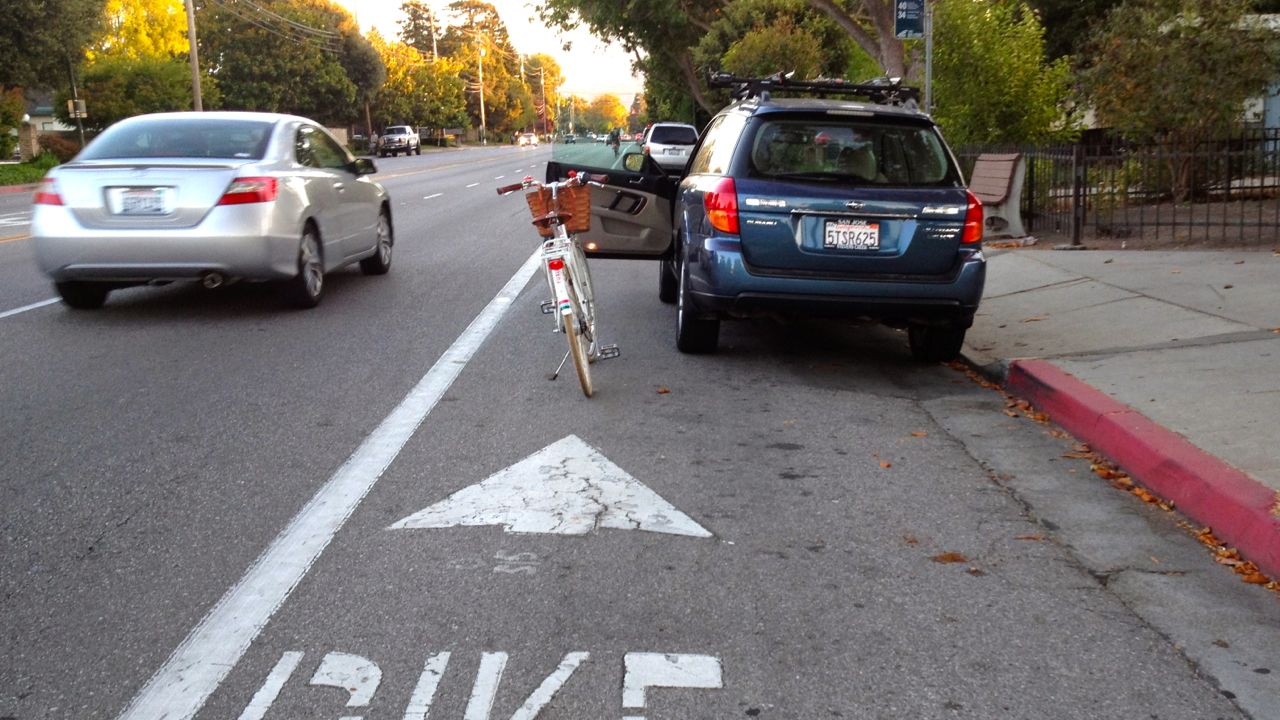
Many bike lanes in Mountain View, including those on California Street, are dangerously striped in the “door zone.” The road diet will allow wider bike lanes so doors aren’t a hazard, making for a low-stress riding experience. Source: Janet LaFluer
The extra space can also accomodate wider bike lanes that are safer and make cycling a more attractive transportation option. The existing bike lanes on California Street are within what’s called the door zone, which means if a person in a parked opens their door without looking, a cyclist may collide with the open door or be forced to swerve into the traffic lane. Both outcomes can lead to injury or death, and cyclist riding in a door zone lane must constantly fear for her safety since every parked car is a potential hazard.
For pedestrians, the additional space are perfect for “bulb outs,” which reduces the crossing distance between sidewalks at intersections, minimizing risk. Additionally, the curb corners can be tightened so vehicles can’t carelessly speed around corners, ignoring and potentially endangering those in the crosswalk.
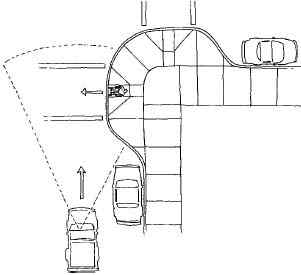
Bulb outs not only shorten the crossing distance for pedestrians, but increase visibility. Source: FHWA
Future Traffic Increase?
In reference to the California Street road diet, Public Works Director Mike Fuller is quoted in the Voice: “But with the projected future (traffic) volumes, we may not be able to.” The projections he’s referring to are in the city’s new General Plan, which is based on a conservative model that assumes minimal reduction in driving by 2030. However, increases in car traffic are not an inevitable force of nature. Building safer, more accessible streets that provide a range of transportation options are key to making the city more livable and improving the quality of life.
UPDATE 9/9/12: The original link to the FHWA study was incorrectly linked to an earlier 2004 study that concluded road diets had limited impact on safety. The FHWA did a follow-up study in 2010 with a more detailed statistical model and found that road diets do have a positive impact on safety. The link in the article has been changed to the 2010 study.

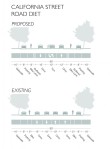
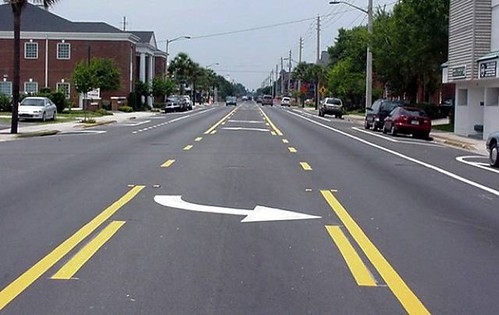
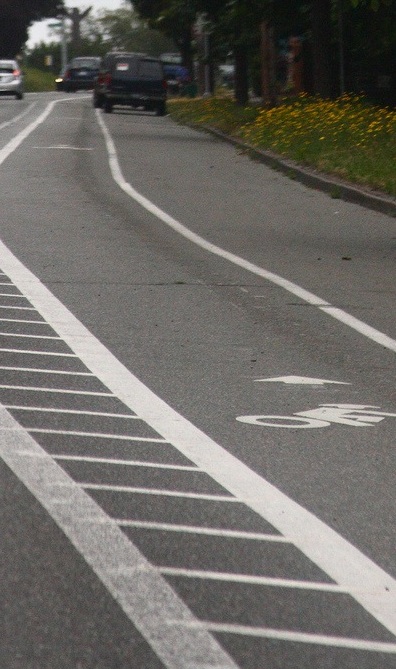
Hi Jarett. Great info! I’m glad that you are helping to bring some data and research into the conversation about how to improve the safety. Can you cite the research about the 19% decrease in total crashes? I didn’t see that mentioned in either of the reports you linked to. Thanks!
Hi Tracy,
Thanks for catching my mistake. I incorrectly linked to an earlier 2004 FHWA study that, as you probably noticed, concluded road diets have limited impact on reducing crashes. I intended to link to the FHWA’s updated research on the topic from 2010, which is where the 19% reduction comes from. Here’s the 2010 study in web and PDF forms for reference.
Sorry about the confusion.
Thanks Jarrett! The newer study is much more conclusive.
Jarrett: Id like to get in touch with you to coordinate some neighborhood involvement. Can you please email me at SaferCaliforniaStreet@gmail.com
Hi Tracy,
Thx for the message! There should be a message in your e-mail.